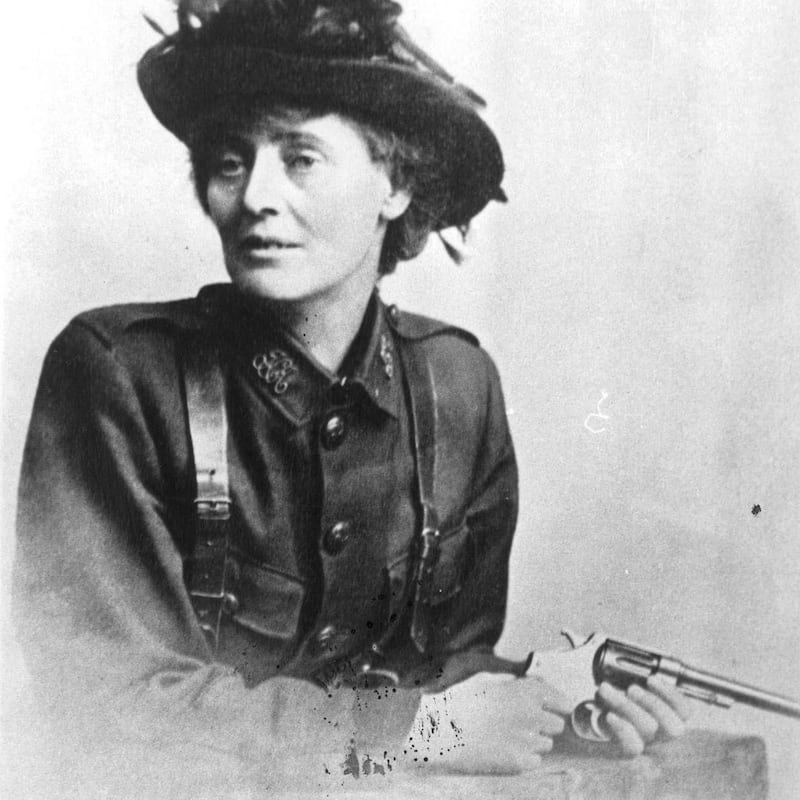Imagine a journey that begins at station Simone Veil and where you reach your destination at station Hannah Arendt. Along the way you pass station Marie Curie, station Rosa Luxemburg, station Paulette Nardal (one of the founders of the Négritude movement), station Helen Sharman (the first European woman in space) and station Aletta Jacobs (the Dutch woman who founded the world's first birth control clinic in 1880).
Such a – metaphorical – journey is possible with the Capital of Europe, Women of Europe project. Inspired by American writer Rebecca Solnit and geographer Joshua Jelly-Schapiro's City of Women project in New York, it involves taking the Brussels metro map as a creative frame to tell a new story of Europe.
The same way Solnit reinvented the New York subway map by renaming all its stations after women who left their mark on the city, this project turns the Brussels metro map into a celebration of women who have helped shape Europe from ancient times to the present day. It includes women drawn from across politics, science, economics, the arts and sport, with at least one from each European Union member state. Many are "firsts" in their field, such as the first woman to win a Nobel Peace Prize (the Prague-born Bertha von Suttner). Ireland is represented by Constance Markievicz and Mary Robinson.
How does it impact our imaginations that so many places in so many cities are named after men and so few after women?
Having long appreciated Solnit’s New York project, in late 2019 I proposed to the Brussels think-tank Friends of Europe, where I am a trustee, that we do something similar with the metro map that people use to navigate the “Capital of Europe”. Covid-19 postponed our plans to launch on Europe Day – May 9th – last year, but last Sunday the newly reimagined map rippled across social media.
Margrethe Vestager, European Commission executive vice-president responsible for digital affairs, shared the map on Twitter, writing: "We talk about the #FathersOfEurope. But there are #MothersOfEurope too! The women who fought for freedom, for peace, for other women … they too made Europe."
The map has since been shared by several of the living women who feature on it: International Monetary Fund managing director Kristalina Georgieva, European Central Bank head Christine Lagarde, former Lithuanian president Dalia Grybauskaite and former Latvian president Vaira Vike-Freiberga.
Rebecca Solnit said that the City of Women project was sparked by the following questions: How does it impact our imaginations that so many places in so many cities are named after men and so few after women? What kind of silence arises in places that so seldom speak of and to women?
It’s the same story with European cities including Brussels, nucleus of the European Union. Its streets, buildings, squares and transport hubs are named mostly after men. A handful of metro stations in Brussels are named after women, including Louise which was named after the avenue that bears the name of a woman honoured because she was King Leopold’s daughter.

The names on the map were chosen in a process that began with a nominations callout that included the Friends of Europe European Young Leaders programme and the Brussels Binder, an initiative that seeks to improve gender diversity in policy debates. One of those involved in making the final selection was Francesca Cavallo, co-author of the best-selling Good Night Stories for Rebel Girls children's books.
Working on the project was a reminder that we Europeans don't tell each other our stories as often as we should. Some of the women from eastern and central Europe were new to me. Simone Veil (the Auschwitz survivor who became the first elected president of the European Parliament and, as health minister in her native France, was key to the legalisation of abortion there) is relatively little known outside Francophone countries. A favourite story is that of Carolina Beatriz Ângelo, who exploited an ambiguous electoral law to become the first woman to vote in Portugal in 1911.
The map (which can be downloaded and printed from the project site, where biographies of each woman can also be found) is envisaged as an artwork, a conversation piece and an educational tool. A number of teachers have expressed interest in incorporating it into lesson plans.
Brussels' public transport authority is now taking steps to ensure women are acknowledged more within its system. It marked International Women's Day this year by temporarily renaming 10 metro stations after prominent women, and has pledged to permanently rename 17 bus and tram stops over the next three years. Last summer, actor Emma Watson and writer Reni Eddo-Lodge announced a plan to reimagine London's tube map, renaming all its stops after women and non-binary people who have made the city what it is.
The Capital of Europe, Women of Europe map is free to download here










